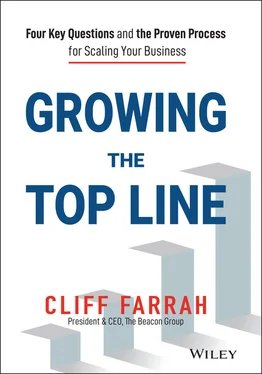It was overwhelming – where to begin? He had last year’s plan, and a template to fill out, but it felt wrong – formulaic, stale, checking the box. Who cared about market segment share, or average sales price, or all the other tables that he had to fill out? He knew what it meant to design a product and manufacture it and knew that both departments were stretched thin. He felt the challenge of selling something new as the company had a retiring sales force and a new requirement for a new “solution” sale. In his gut, he felt that the reality of feet on the street didn’t line up with these forms that the company had used for the past decade. His boss told him to just update for this year’s plan, but rather than mailing it in, he felt the awesome responsibility of doing a good job.
If you work in the corporate world, at some point you will be or have been Harrison. And you were right to feel the disconnect between what you knew the real challenges of the job to be and the traditional annual planning document you were given.
When you mention growth strategy, a few different reactions occur. If you are telling your friends what you do, their eyes glaze over. If you are being told you have a new role, you may panic a bit. If you are the one letting people know they are now responsible for developing it, you may be a bit concerned about what you will get back from them.
Growth strategy development is the application of strategic thought to the challenge of growth. In its best form, it clearly articulates how you are going to achieve an objective. What you will do, who will do it, when it will occur, and why it is necessary to reach your goal. It reflects the strengths and weaknesses of your organization, the market landscape you will compete in, the adversaries you face, and the resources you have.
In the past 30 years, I’ve been lucky enough to work with the best of the best at Fortune 200 clients in healthcare, defense, financial services, software, hardware, professional services, industrials, pharma, consumer goods, technology, energy, education, and retail.
There are several key learnings that emerge when I look back on their growth strategy practices.
1 Everyone has a slightly different approach, although the very best have a structured, teachable, repeatable methodology.
2 If you “know,” you know that it’s all about the team that is executing.
3 There are core market elements universally assessed by the best of the best.
4 New business models have become recognized as disruptive and powerful tools.
5 Where you play geographically matters.
6 Timing is everything.
Our process and framework incorporates these concepts in this book.
Successful growth strategists are clearly not dreamers. They recognize the challenge of implementation and are able to harness the knowledge and experience in an organization to mitigate risk. In fact, successful growth strategists are risk mitigators, not risk takers. They are pragmatic and know that successful growth is measured not by what you promise, but by what you deliver. And delivery is extremely easy to measure for most clients by answering a single question: Did you hit the top line revenues associated with the plan when you were supposed to?
If it were just about sales, this would be a relatively easy exercise, but sustainable growth has to also be about return on investment (ROI) and profitability. If I gave you an unlimited budget, then inorganic growth, or growth through acquisition, would let you easily hit any revenue target. You would just buy companies until their combined revenue hit the goal you had. Problem solved, right?
While for some companies acquisition is a core weapon in their arsenal, generally the mixed bag of acquired company profitability and the ongoing challenges of integration of the different companies would likely fail on sustainability and ROI. A reality of business, especially large enterprise, is the sensitivity to a predictable, defined return on investment, so we will consider that in our process. Cost matters, and as you think about a successful growth plan, it has to include the level of expenditure required to achieve that growth.
Simply put, growth strategy is a plan to drive revenue growth. More practically, it’s a way that leaders of businesses think about how they will align resourcing with opportunity to achieve a goal. As an optimist coming through the ranks in the consulting industry, I’ve always believed that there is no growth goal that is unachievable if the will is there. History shows that to be true, but it’s never without extraordinary challenge. For sustainable success there is always a balancing act that you find best represented in the profit equation:

You will always hear the critique from reviewers that a plan is “pie in the sky.” By that, they really mean that the resourcing to achieve the plan isn’t reasonable, or available, or within plan. We will come back to the cost side later, but what’s important to realize is that cost cutting is a finite game. You can only cut cost to what is required to produce the good or service being offered. Revenue, however, is infinite, limited only by imagination and determination.
That’s how you think about it, right? Entrepreneurs understand this well, as do newly minted general managers (GMs) or even those like Harrison, tasked with taking point on an annual plan. You can literally do anything to drive growth! It’s overwhelming. Hell, everyone today wants to be visionary, a disruptor, a magical leader of change in the markets. Consistent growth strategy development takes time, focus, effort, and knowledge.
No one exemplifies these qualities better than James Klein, one of the most successful, accomplished strategists I know. James is the President of both the Infrastructure and Defense Products Division at Qorvo corporation, as well as their newly formed Qorvo Biotechnologies division. I can’t show you his financial performance in the decades I’ve known him due to disclosure restrictions, but if he was a major league ball player, he’d be in the hall of fame. James has created more value for his employers in his career than just about anyone I know, but he doesn’t forget how he got there.
I grew up in technology as an engineer early on and then really went into project management and program management. And then I took over a group. So now I had a “business” to run. This was the first time I had to think – “Okay, well, I’ve got this thing, now what in the world do I do with it? Where do we go? Where do we invest money? What business do we want to be in?” It may have come naturally to me because of my dad. He had retired from the Air Force and started his own couple of small companies and I remember what we would usually argue about was where we should invest money. So strategy was an early thing to me. Since maybe in my teens I’ve thought about how you grow a business and so it’s been a part of me for a long time, but probably reduced to practice when I first took over as a director of an organization.
James is a master of growth strategy development and execution. He’s pretty rare. You come across people who can think about how you could grow, but very few of them are capable of driving that growth. I really enjoy his recollection of where he started:
Early on… I was at TI (Texas Instruments) and I took over the space business. We were trying to decide what we had. We had started the space business on one very particular set of products, and we said, “now that we’ve got this, how do we expand it? Where else do we go?” So the first thing for me was just try to look at, what did the market look like, and it is particularly hard on the defense side to understand markets. What are we good at? What were the markets? How big could we be? What did we need to invest? And we went through that process. Now you know at TI and other large companies that usually have some guidance, you fill out these charts and so you get a little bit of guidance on how to move forward. But I would say it was really trying to understand what the market looked like and how did that intersect our technology.
Читать дальше













